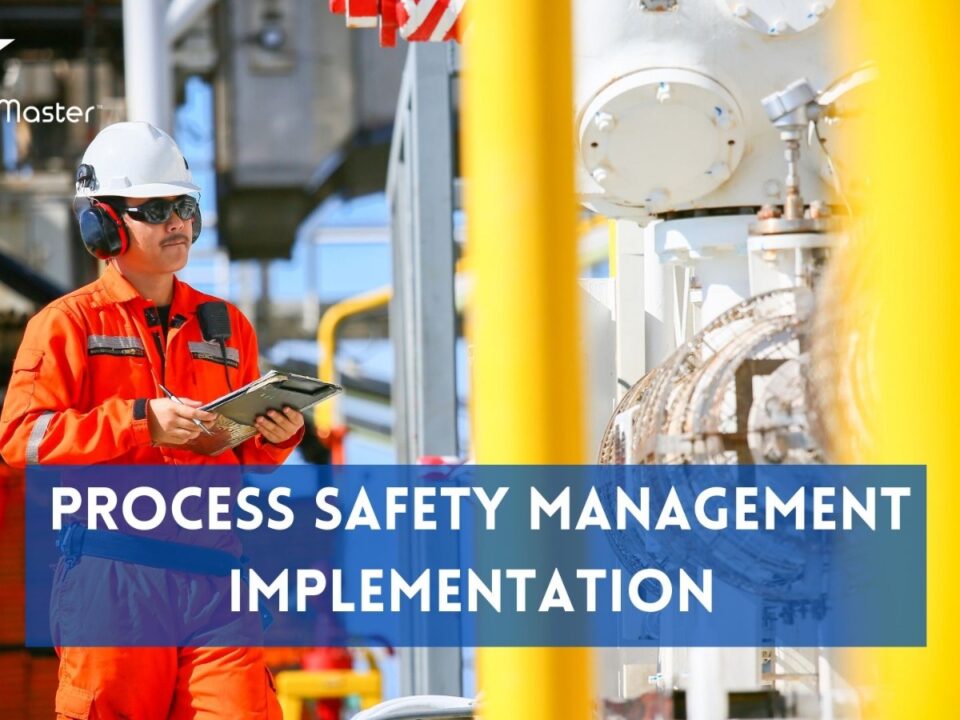How to Conduct a Successful PSSR in Your Chemical Plant Pre-Startup Safety Review

Collaboration and Coordination: The Building Blocks of Effective Emergency Response & Disaster Management
May 14, 2023
Comprehensive Safety Audit
May 15, 2023How to Conduct a Successful PSSR in Your Chemical Plant
In this article, we will explore the critical aspects of conducting a successful Pre-Startup Safety Review (PSSR) in your chemical plant. A poorly conducted PSSR can lead to devastating consequences, including worker injuries, environmental damage, and financial losses for your organization. To avoid such mishaps, it is essential to follow a structured approach while carrying out a PSSR. We will provide you with some valuable insights and practical tips that you can use to ensure that your PSSR is thorough and effective. By the end of this article, you will have a step-by-step blueprint that will help you conduct a successful PSSR and achieve the desired outcomes for your business.
Introduction
Every chemical plant has to deal with the challenge of ensuring a safe work environment for its employees and keeping its equipment running optimally. Preventive Safety System Reviews (PSSRs) are one of the most critical tools that help chemical plants achieve these goals. PSSR helps identify, assess, and mitigate risks before starting up or restarting a process. In this article, we will discuss conducting a successful PSSR in your chemical plant. We will cover everything from understanding what PSSRs are and how to prepare for them, to conducting the review meeting and documenting findings. By following our guide, you’ll learn how to eliminate hazards and risks in your operations while keeping your employees safe and reducing downtime due to equipment failure
Understanding PSSR in Chemical Plants
Chemical plants involve complex and potentially hazardous processes that require a thorough understanding of the inherent risks involved. Process Safety Management (PSM) is crucial to ensuring safe operations within the plant. One key element of PSM is Pre-Start-up Safety Reviews (PSSR), which are conducted before a new or modified process is started up. PSSRs are intended to identify hazards and ensure appropriate controls are in place to reduce risks associated with starting up a new or modified process. The review should involve all relevant personnel, including operators, maintenance personnel, supervisors, and management. A successful PSSR will ensure that the plant’s operation conforms to design specifications and will provide assurance that all safety features have been installed correctly and function as required.
The review should cover all aspects of the process including equipment installation, electrical systems, instrumentation and controls, start-up procedures, emergency response plans, material handling systems among others. A detailed hazard analysis should be conducted for each aspect of the process to identify potential hazards such as fire or explosion risk which must be properly addressed before start-up can occur. Understanding PSSR in Chemical Plants is critical for effective management of safety concerns associated with plant operations while minimizing risk to employees and the public alike.
Preparing for PSSR
Before conducting a Pre-Startup Safety Review (PSSR), it is important to prepare for the meeting. This includes reviewing project and design information, compiling a list of safety critical equipment, verifying that all applicable regulations and standards are being met, as well as confirming that any required permits have been obtained.It is also necessary to identify all individuals who will be involved in the PSSR process, including those responsible for specific equipment or processes and those who will be responsible for implementing any necessary corrective actions. Communication between all parties involved should be established before the meeting to ensure expectations are clearly defined.
Additionally, establishing an agenda and timeline for the PSSR meeting can ensure that all items are covered in a timely manner. Prioritizing safety-critical items can help ensure that potential hazards are identified and addressed as quickly as possible. By following these steps, you can help ensure the success of your PSSR in keeping your chemical plant safe.
Conducting the PSSR Meeting
Once you have prepared for the PSSR, it’s time to conduct the actual meeting. The meeting should be attended by all relevant stakeholders, including process engineers, maintenance personnel, and safety officers. The purpose of the meeting is to review the process and identify any hazards or issues that may arise during operations.During the meeting, it’s essential to ensure that everyone is engaged in discussions and actively participating in identifying potential hazards. Encourage open communication and avoid apportioning blame or criticism. Facilitate a constructive dialogue where team members can raise concerns and offer ideas for improvement.
Be sure to document all findings from the PSSR meeting accurately. This documentation will serve as a robust reference tool for future reviews and assessments of plant operations. Ultimately, conducting a successful PSSR meeting is essential to ensure safe operation of your chemical plant while minimizing risks and hazards associated with your processes.
Identifying Hazards and Risks
Identifying Hazards and Risks: One of the most critical steps in conducting a PSSR is identifying potential hazards and risks that may arise during the operation of a chemical plant. This involves reviewing all the safety measures in place and evaluating if they are effective in mitigating possible hazards. It also requires assessing any new equipment, procedures or changes implemented since the last PSSR was conducted.
A comprehensive hazard identification process should include input from all stakeholders such as operators, maintenance staff, engineers, supervisors and safety personnel. A thorough examination of operating procedures, process flow diagrams, equipment manuals and other relevant documentation can help identify potential hazards. Additionally, field observations are useful to identify physical hazards such as leaks or spills.
It is crucial to take into account all possible scenarios that can lead to accidents. Once identified, each hazard should be thoroughly analyzed to determine the likelihood of occurrence and its potential impact on people, equipment or the environment. By identifying hazards and their associated risks early on in the PSSR process, it becomes easier to develop effective mitigation strategies that can reduce or eliminate them altogether.
Developing Mitigation Strategies
Developing Mitigation Strategies:Now that potential Hazards and Risks have been identified, it is crucial to develop effective mitigation strategies. Mitigation strategies should be designed to eliminate or reduce risks to a tolerable level. The selection of mitigation strategies should be based on their effectiveness and feasibility.
The first step in developing mitigation strategies is to determine the hierarchy of controls. The hierarchy of controls ranks various control measures by their effectiveness in reducing hazards. The highest-ranking controls are those that eliminate the hazard, such as replacing a hazardous chemical with a less hazardous one. Other measures include engineering controls, administrative controls, and personal protective equipment.
Once the hierarchy is established, the most effective control measure(s) can be selected based on feasibility and cost-effectiveness. It is important to involve all stakeholders in the development process to ensure successful implementation. The implementation plan should include timelines, budgets, responsibilities, and methods for monitoring progress.
Effective mitigation strategies are critical for ensuring safety in chemical plants. By following a structured approach like this one for developing them, plant managers can successfully minimize risks and avoid hazardous incidents from occurring in their facilities.
Implementing Hazards and Risks PSSR Recommendations
After identifying the potential hazards and developing mitigation strategies, the next crucial step for a successful PSSR is implementing the recommendations. This stage involves taking concrete actions to eliminate or reduce the risks identified during the previous stages.Implementing PSSR recommendations requires effective communication and collaboration among different stakeholders, including plant managers, engineers, and operators. It also involves setting priorities based on risk assessments and allocating resources accordingly. The implementation process should be well-documented to provide transparency and accountability.
Implementing PSSR recommendations is not a one-time event but an ongoing process that requires constant monitoring and review. Regular audits should be conducted to ensure that all recommended actions have been taken, and any deviations are addressed promptly. With a robust implementation plan in place, chemical plants can improve safety performance while minimizing operational downtime due to incidents or accidents.
Monitoring and Reviewing PSSR Effectiveness
Monitoring and Reviewing PSSR Effectiveness:After completing the PSSR process, it is crucial to monitor and review its effectiveness continually. The PSSR team should establish a monitoring system that will regularly evaluate the performance of all the implemented mitigation strategies.
For details visit www.thesafetymaster.com
Contact us for Hazards and Risks Assessment or HAZOP or PSSR Services or Process Safety Management Implementation
Send enquiry to info@thesafetymaster.com
TSM TheSafetyMaster® Private Limited
info@thesafetymaster.com
www.thesafetymaster.com +917665231743
#OnlineTraining www.thesafetyguru.online TheSafetyGuru Centre for Learning & Excellence BookMySafety™
#help #safety #industrial #safety #safetyfirst #safetyequipment #safetysolutions #safetyshoes #safetyboots #safetyandsecurity #safetyculture #safetyawareness #safetymatters #safetyprofessionals #safetycourses #safetyofficer #safetyatwork #safetymatters #safetyconsulting #riskmanagement #risk #riskassessment #riskconsulting #hazardousareas #hazards
#saferindiabetterworld
Consulting www.thesafetymaster.com
Online Training www.thesafetyguru.online
Products www.bookmysafety.com
#safetyprofessionals #safetyculture #safety #safetyfirst #safetyconsulting #safetytraining #safetytraining #safetyaudit #safetymanagement #safetyleadership #safetytips #safetyatwork #safetyofficers #safetycompliance #safetysolutions # #lifesafety behavioralscience
#firesafety #fireprotection #firefighting #processsafetymanagement
#processindustry #bbs #riskassessment #hazardousareas #hazard




